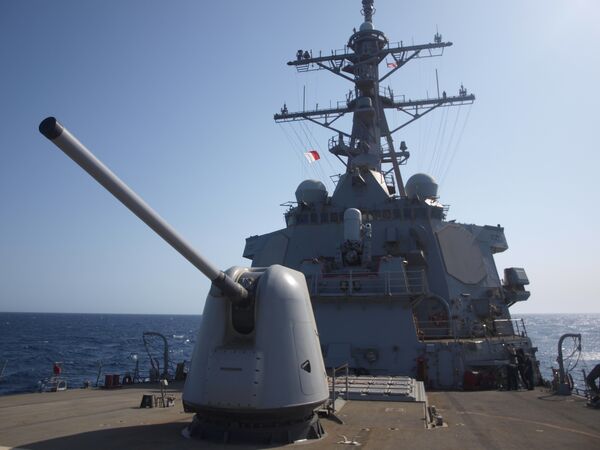
USS Laboon, pictured here, became the first naval ship to intercept a ballistic missile in combat. The US Navy is now acquiring a new radar suite for improved ballistic missile defence. (Michael Fabey)
While the US Navy (USN) has reported recent success using the Aegis Combat System (ACS) and associated SPY radar equipment to conduct ballistic missile defence (BMD) in the Red Sea, the USN is working on development problems with its next-generation AN/SPY-6(V)1 family of Air and Missile Defense Radars (AMDRs), according to a recent US Government Accountability Office (GAO) report.
“The program continues to identify and address issues discovered during environmental qualification testing,” the GAO said in its Weapon Systems Annual Assessment , released in June.
“The navy expects AMDR's family of radars – beginning with the AN/SPY-6(V)1 – to provide increased sensitivity for long-range detection to improve ballistic missile defence against advanced threats,” the GAO noted.
The importance of BMD in naval combat has become increasingly clear with USN operations in the Red Sea.
Guided-missile destroyer USS Laboon (DDG 58) was the first naval ship to shoot down a ballistic missile launched in combat against a maritime vessel, Commander Eric Blomberg, Laboon commanding officer, told Janes in a 12 June interview aboard his ship in the Red Sea.
A cruise missile approaches a ship at Mach 1, he said. For a ballistic missile, “you multiply that four to eight times”.
For more information about Red Sea naval combat, please seeIn Red Sea, US Navy battles missiles, unmanned threats, and misinformation campaign.
BMD improvements for AMDR sensors under development will provide sailors with much-needed additional time for successful intercepts, according to USN officials.
Looking to read the full article?
Gain unlimited access to Janes news and more...







